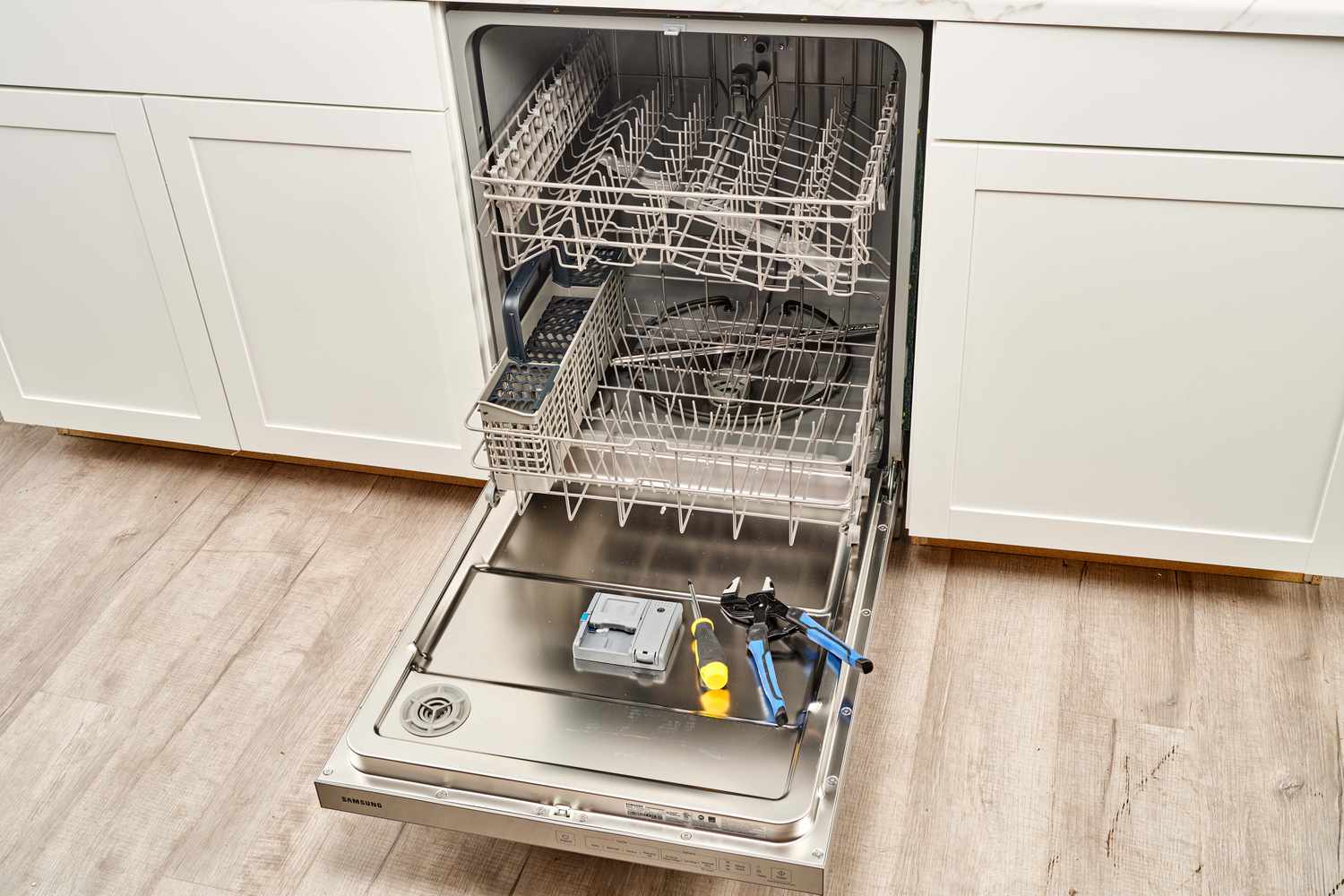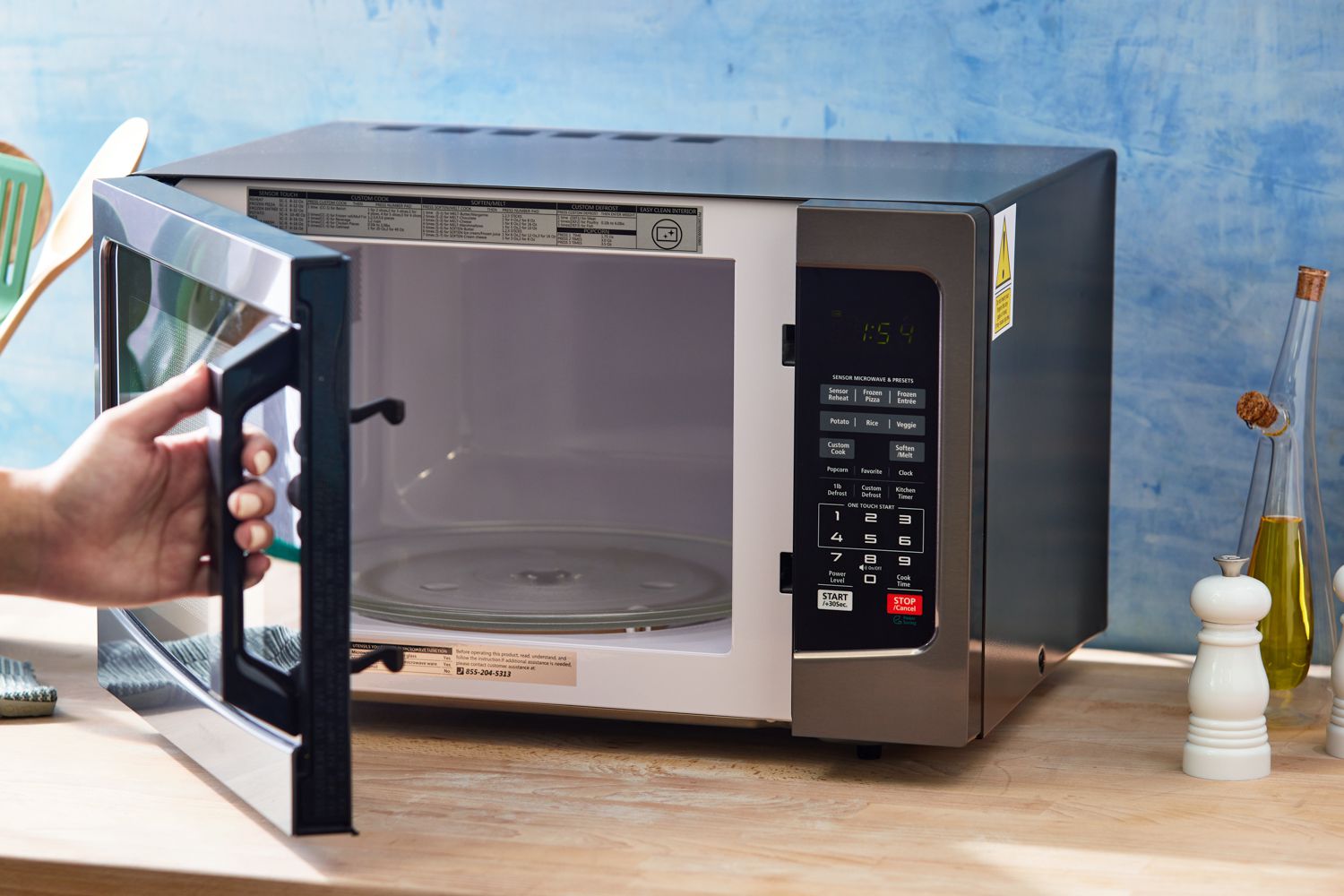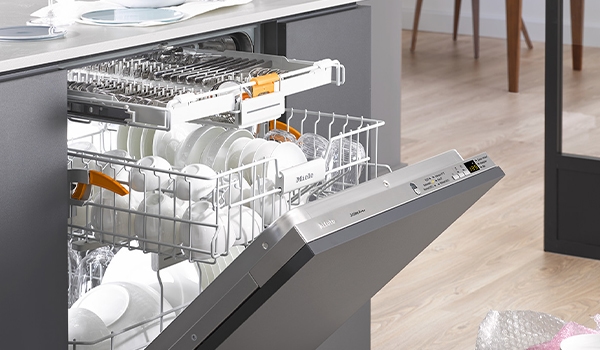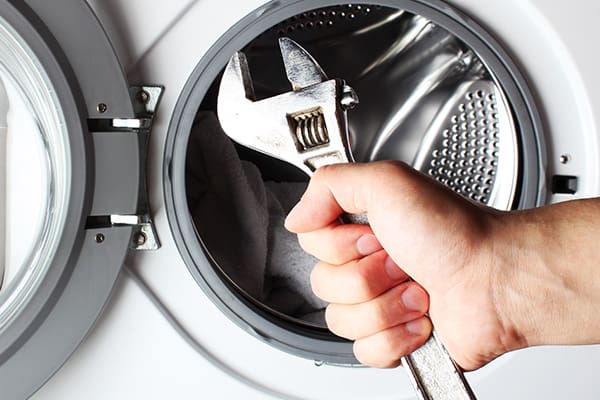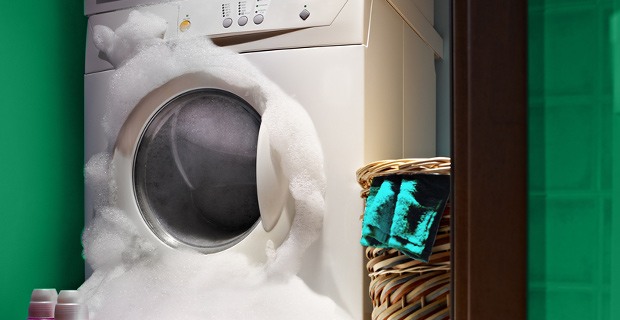What are common dishwasher problems, and how do you fix that?
When your dishwasher fails to drain properly, it can disrupt your daily routine and leave you with standing water and dirty dishes. Addressing this issue promptly is essential to maintain the efficiency and functionality of your appliance. From clearing blockages in the drain hose to inspecting the drain pump for clogs, there are several steps you can take to troubleshoot and resolve the problem. By understanding the common causes of improper drainage and taking proactive measures to address them, you can ensure that your dishwasher operates smoothly and effectively, leaving your dishes clean and dry after every cycle.
Dishwasher Doesn't Start
When your dishwasher fails to start, it can be frustrating, especially if you're relying on it to clean your dishes efficiently. However, there are several troubleshooting steps you can take to identify and potentially resolve the issue.
Firstly, check the power sources and connections. Ensure that the dishwasher is securely plugged into a functioning power outlet. Sometimes, power cords may become loose over time, so it's worth checking the connections at both ends. Additionally, inspect the circuit breaker or fuse box to ensure that a power outage or tripped circuit isn't the cause of the problem.
Next, examine the door latch and switch. The dishwasher won't start if the door isn't properly closed or if the latch is damaged. Make sure that the door closes securely and that the latch engages fully when you close it. If the latch appears damaged or worn, it may need to be replaced to restore proper functionality.
If the power sources and door latch are both in good condition, try resetting the dishwasher. This can sometimes resolve minor technical glitches or errors. To reset the dishwasher, locate the circuit breaker or fuse corresponding to the dishwasher and turn it off for a few minutes. Then, switch it back on and attempt to start the dishwasher again. This simple reset may clear any temporary issues and allow the dishwasher to start normally.
By following these steps, you can troubleshoot why your dishwasher isn't starting and potentially resolve the issue without the need for professional assistance. However, if the problem persists despite these efforts, it may indicate a more serious underlying issue, and you may need to contact a technician for further diagnosis and repair.
Poor Cleaning Performance
Poor cleaning performance from your dishwasher can be frustrating, leaving your dishes less than sparkling clean. However, there are several steps you can take to improve its efficiency and ensure your dishes come out pristine after each cycle.
Firstly, ensure proper loading of dishes. Overloading the dishwasher or blocking the spray arms can prevent water and detergent from reaching all surfaces of the dishes, resulting in incomplete cleaning. Arrange dishes strategically, placing larger items along the sides and back, and ensuring that dishes are not nested or overlapping.
Next, check for debris in the spray arms and filters. Clogged spray arms or filters can restrict water flow and reduce cleaning effectiveness. Remove the lower and upper spray arms, as well as any removable filters, and rinse them thoroughly under running water to remove any accumulated food particles or debris.
Verify the water temperature and pressure to ensure optimal cleaning performance. The water entering the dishwasher should be at least 120°F (49°C) for effective removal of grease and food residues. Additionally, adequate water pressure is necessary to properly distribute detergent and rinse aid throughout the dishwasher during the wash cycle.
Using the right detergent and rinse aid is also crucial for achieving optimal cleaning results. Choose a high-quality dishwasher detergent that is specifically formulated for your dishwasher model and water hardness level. Additionally, using a rinse aid can help prevent spotting and ensure that dishes dry quickly and evenly.
By following these steps and incorporating proper loading techniques, regular maintenance, and the right cleaning products, you can improve the cleaning performance of your dishwasher and enjoy consistently spotless dishes after every wash cycle.
Water Leakage
Water leakage from your dishwasher can lead to damage to your kitchen floor, cabinets, and potentially even neighboring areas. Addressing this issue promptly is essential to prevent further damage and maintain the functionality of your appliance.
Firstly, examine the door gasket for wear or damage. The door gasket forms a seal around the dishwasher door, preventing water from leaking out during operation. Over time, the gasket may become worn, torn, or covered in debris, compromising its effectiveness. Inspect the gasket thoroughly, paying close attention to any signs of wear, tears, or gaps. If damage is detected, the gasket may need to be replaced to restore the seal and prevent further leakage.
Next, inspect the inlet valve and hoses for leaks. The inlet valve controls the flow of water into the dishwasher, while hoses transport water to and from the appliance. Leaks in the inlet valve or hoses can result in water pooling around the dishwasher or beneath it. Check for any visible signs of water accumulation, dampness, or corrosion around these components. If leaks are detected, the affected parts may need to be repaired or replaced to prevent further leakage.
Tightening or replacing hose connections can also help prevent water leakage. Loose or improperly connected hoses can result in water seeping out during operation. Ensure that all hose connections are securely tightened and free from damage or deterioration. If any connections appear loose, tighten them using a wrench or pliers. If hoses show signs of damage or wear, they may need to be replaced to prevent future leaks.
Lastly, leveling the dishwasher can help prevent water overflow and leakage. If the dishwasher is not properly leveled, it may tilt forward or backward during operation, causing water to spill out. Use a level to check the alignment of the dishwasher, adjusting the leveling feet as needed to ensure that it sits evenly on the floor.
By following these steps and addressing any issues promptly, you can effectively troubleshoot and resolve water leakage from your dishwasher, preserving the integrity of your appliance and preventing potential water damage to your home.
Unusual Noises During Operation
Unusual noises emanating from your dishwasher during operation can be a cause for concern, signaling potential issues with its components. Investigating the possible causes of these noises is essential for maintaining the efficiency and longevity of your appliance.
Firstly, it's crucial to investigate potential causes of the noise, such as worn pump or motor bearings. Over time, the bearings in the dishwasher's pump or motor may become worn or damaged, resulting in grinding, rattling, or squeaking noises during operation. Listen carefully to pinpoint the source of the noise and inspect the pump and motor for any signs of wear, corrosion, or damage. If worn bearings are identified as the cause, they may need to be replaced to restore smooth and quiet operation.
Next, check for loose or broken components that could be contributing to the noise. Loose screws, bolts, or fasteners can cause parts to vibrate or rattle during operation, resulting in unwanted noise. Inspect all visible components, including the spray arms, racks, and panels, and tighten any loose or wobbly parts using appropriate tools.
Lubricating moving parts as needed can also help reduce noise and ensure smooth operation. Apply a small amount of dishwasher-safe lubricant to hinges, rollers, and other moving components to reduce friction and minimize noise. Be sure to use lubricants recommended by the manufacturer to avoid damage to sensitive parts.
If unusual noises persist despite these efforts, it may be necessary to call for professional service. A qualified technician can perform a thorough inspection of your dishwasher, diagnose the underlying issue, and recommend appropriate repairs or replacements. Attempting to repair complex or internal components without the necessary expertise can lead to further damage or safety hazards.
By taking proactive measures to investigate and address unusual noises during dishwasher operation, you can help maintain its performance and prolong its lifespan, ensuring quiet and efficient dishwashing for years to come.
Dishwasher Not Draining Properly
When your dishwasher fails to drain properly, it can leave standing water in the bottom of the tub, leading to unpleasant odors and potential damage to the appliance. Addressing this issue promptly is crucial to ensure efficient operation and prevent further problems.
One common cause of improper drainage is blockages in the drain hose or air gap. Over time, food particles, grease, or debris can accumulate in these areas, obstructing the flow of water out of the dishwasher. Inspect the drain hose and air gap for any signs of blockage, and use a pipe cleaner or small brush to remove any obstructions. Clearing these blockages can restore proper drainage and prevent water from backing up into the dishwasher.
Another potential culprit is a clogged or damaged drain pump. The drain pump is responsible for removing wastewater from the dishwasher during the drain cycle. Inspect the pump for any visible clogs, such as food particles or debris, and remove them carefully. Additionally, check for any signs of damage, such as cracks or breaks in the pump housing or impeller. If the pump is damaged, it may need to be replaced to restore proper drainage.
Cleaning the dishwasher's interior can also help improve drainage by removing any accumulated debris or residue. Remove the bottom rack and inspect the drain area for any food particles or other obstructions. Use a sponge or soft brush to scrub the interior surfaces, including the drain filter and sump area, and rinse thoroughly with hot water. Regular cleaning can prevent buildup and ensure efficient drainage.
If your dishwasher is connected to a garbage disposal, check for clogs in the disposal unit. A clogged disposal can prevent water from draining properly from the dishwasher, leading to backup and standing water. Run the disposal to clear any obstructions, and ensure that the drain hose is properly connected and free from kinks or bends.
By following these steps and addressing any issues promptly, you can effectively troubleshoot and resolve drainage problems with your dishwasher, ensuring efficient operation and optimal performance.


